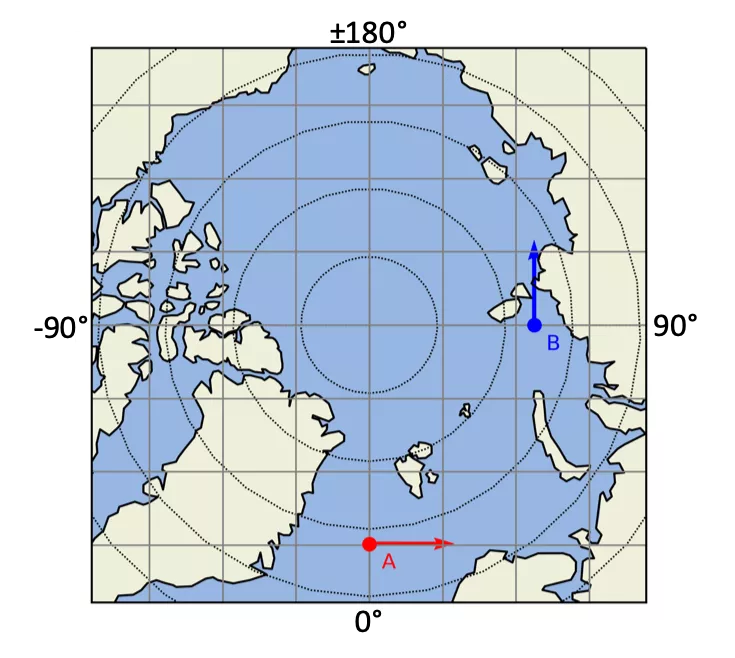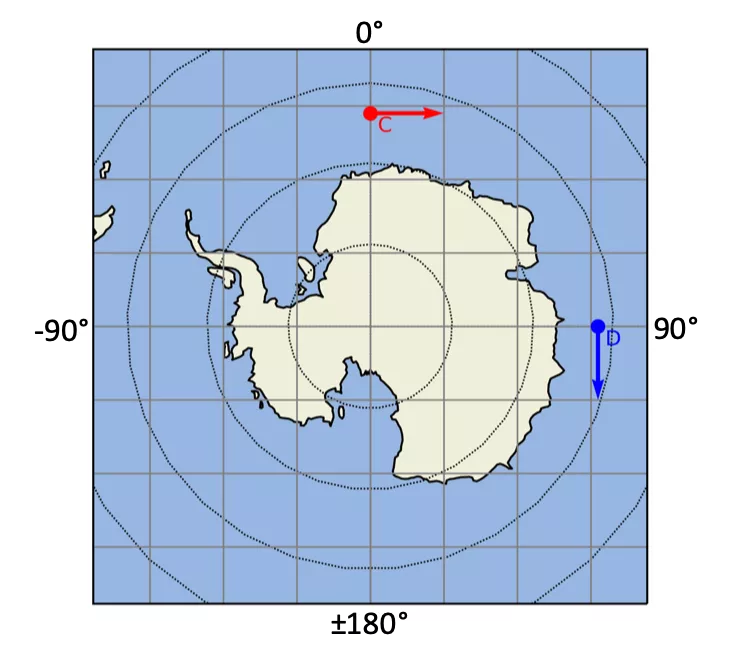How to convert the horizontal and vertical components to east and north
This article describes how to convert the u (horizontal) and v (vertical) components from the ice motion data set to East and North components on the Earth's surface. Instructions for both the Northern and Southern Hemispheres are described below:
Northern Hemisphere
The latitudes and longitudes for the Northern Hemisphere are shown in Figure 1.
Figure 1. Latitudes and longitudes for the Northern Hemisphere.
The directions in the product are:
- u: toward the right on the grid
- v: upward (toward the top) on the grid
- East is counterclockwise
- North is toward the center of the grid
To compute the East and North components, apply a rotation matrix, which results in:
- E: u * cos L + v * sin L
- N: -u * sin L + v * cos L
- where L is the longitude
- Note the negative sign in the first term of N
This can be checked by verifying that:
- at L=0o, a u-only vector (to the right) corresponds to east (positive E)
- at L=0o, a v-only vector (toward the top) corresponds to north (positive N)
- at L=90o, a u-only vector (to the right) corresponds to south (negative N)
- at L=90o, a v-only vector (toward the top) corresponds to east (positive E)
In Figure 1, both vectors A and B are pointing East.
Southern Hemisphere
The latitudes and longitudes for the Northern Hemisphere are shown in Figure 2.
Figure 2. Latitudes and longitudes for the Southern Hemisphere.
The directions in the data set are:
- u: toward the right on the grid
- v: upward (toward the top) on the grid
- East is clockwise
- North is outward from the center of the grid
To compute East and North components, apply a rotation matrix, which results in:
- E: u * cos L - v * sin L
- N: u * sin L + v * cos L
- where L is the longitude
- Note the negative sign in the second term of E
This can be checked by verifying that:
- at L=0o, a u-only vector (to the right) corresponds to east (positive E)
- at L=0o, a v-only vector (toward the top) corresponds to north (positive N)
- at L=90o, a u-only vector (to the right) corresponds to north (positive N)
- at L=90o, a v-only vector (toward the top) corresponds to west (negative E)
In Figure 2, both vectors C and D are pointing East.

